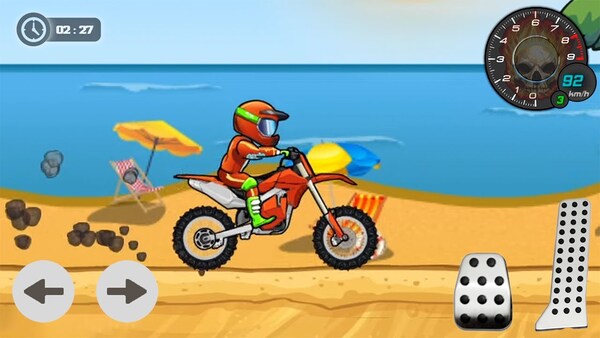Introduction
Core Keeper is a 2D sandbox survival game developed by Pugstorm and published by Fireshine Games that has quickly built a devoted fanbase. Set in a mysterious underground world, players awaken as explorers trapped near a mystical relic known as the Core. From mining valuable resources and crafting essential gear to cultivating crops and battling ancient creatures, Core Keeper offers a diverse and rewarding gameplay loop. With mechanics reminiscent of Terraria, Stardew Valley, and Minecraft, this indie gem combines exploration, progression, and co-op action in an endlessly customizable cave ecosystem. This comprehensive article breaks down every major feature and system, offering a deep dive into the gameplay structure, design philosophy, updates, and reasons behind the game’s growing popularity.
Origins and Development of Core Keeper Game World
The vision behind Core Keeper started with the desire to blend familiar crafting systems with an original underground aesthetic. Developed in Sweden by the indie studio Pugstorm, the game was inspired by early 2000s pixel art and modern survival games. Unlike most open-world titles that focus on overworld biomes, Core Keeper places players in vast procedurally generated caverns that demand exploration, mining, and discovery. The development team focused on accessible multiplayer systems from the start, enabling smooth drop-in/drop-out co-op gameplay. After a successful early access launch on Steam in March 2022, the game garnered strong community support that helped guide regular updates and feature expansions. The evolving nature of its world and systems keeps players engaged and hungry for more discoveries beneath the surface.
Gameplay Mechanics and Core Loop in Core Keeper
Core Keeper’s gameplay loop revolves around exploration, resource gathering, crafting, combat, and progression. Players begin with basic tools, using pickaxes to mine through the dark soil while uncovering glowing crystals, rare ores, and ancient ruins. Food and stamina management are critical in early survival stages, with foraging and farming becoming key systems for sustainability. Combat grows in intensity as players uncover dangerous biomes filled with aggressive enemies and lurking bosses. Each new zone introduces unique materials and challenges that push players to upgrade their gear, expand their base, and restore power to the mysterious Core. The gameplay flow is organic and satisfying, encouraging both solo and team-based strategies to thrive in the expanding underground world.
Biomes and Environments in Core Keeper Underground Ecosystem
The world of Core Keeper is divided into several distinct biomes, each with its own environmental hazards, enemies, and treasures. Starting in the dirt-laden central zone, players can expand into the Clay Caves, the Glimmering Sea, the Forgotten Ruins, and beyond. These biomes introduce escalating difficulty but also provide new materials like scarlet ore, glowing plants, and ancient circuitry. Each zone features atmospheric lighting, unique enemy behavior, and background lore conveyed through environmental storytelling. Exploration is non-linear—players can approach zones in different orders depending on their goals, making each playthrough feel distinct. Biome-specific loot, such as rare seeds, fishing spots, and biome bosses, ensures that players are constantly rewarded for venturing deeper into the unknown.
Crafting System and Resource Management in Core Keeper
Crafting in Core Keeper is intuitive yet deep. As players gather materials, they unlock new crafting stations like the Furnace, Anvil, Electronics Table, and Cooking Pot. Crafting recipes evolve with player progress, allowing upgrades from wooden tools to iron, scarlet, and galactica-tier equipment. Base-building also integrates crafting heavily, with walls, doors, lighting, and traps enhancing defensive and aesthetic design. Farming becomes vital for both healing and stat buffs, with crops like heartberries, glow tulips, and bomb peppers offering useful effects. Players must also manage durability, inventory space, and fuel sources, adding layers of complexity. The resource economy is well balanced, rewarding exploration while encouraging efficient production strategies within the home base.
Multiplayer and Co-op Experience in Core Keeper
One of Core Keeper’s standout features is its seamless multiplayer. Up to eight players can collaborate in a shared world, combining efforts to mine faster, craft stronger gear, and defeat massive bosses. Co-op play encourages division of roles—some players may specialize in farming while others focus on exploration or combat. Voice chat integration and mod support enhance team communication and coordination. Multiplayer doesn't just make the game easier—it reshapes the experience. Boss fights become cooperative raids, massive bases emerge from joint labor, and cavern traversal becomes a shared adventure. Whether playing with close friends or joining public servers, the co-op systems in Core Keeper elevate its replay value and long-term appeal.
Combat and Boss Battles in Core Keeper
Combat in Core Keeper is simple at first but grows more tactical with each biome. Players start with melee weapons like swords and shovels but soon unlock ranged options like slingshots, fire staffs, and bombs. Armor sets grant useful buffs—speed, damage reduction, or stamina regeneration—tailoring characters to specific roles. Boss fights serve as progression gates and narrative milestones. Notable bosses include Glurch the Abominous Mass, Ghorm the Devourer, and the Hive Mother. Each boss has unique patterns, attack phases, and environmental mechanics. Victory yields rare drops like relic shards, unique accessories, or crafting schematics. Combat is responsive and satisfying, with enough variety and difficulty scaling to remain challenging and engaging throughout the game.
Skill Tree and Character Progression in Core Keeper
Core Keeper features a passive skill system that rewards players for their behavior. As they mine, fight, cook, or run, they gain experience in associated skill trees—Mining, Running, Crafting, Gardening, and more. Each skill level provides small bonuses and unlocks nodes that offer specialized perks. For example, the Mining tree might provide a chance to preserve tool durability or increase rare ore drops, while the Fishing tree could speed up reel times or improve catch quality. These upgrades are permanent and persistent across sessions, creating a sense of RPG progression that complements the sandbox gameplay. The skill system empowers different playstyles, letting players focus on what they enjoy most without penalty.
Art Style, Music, and Overall Atmosphere of Core Keeper
The pixel art in Core Keeper is retro yet refined, offering detailed animations, glowing effects, and atmospheric lighting that make caves feel alive. The design evokes nostalgia while maintaining modern visual clarity. Characters, enemies, and environments are expressive despite the pixel limitations, and biome differentiation is strong. Sound design plays a major role in immersion, from the soothing soundtrack that adapts to the player’s location to ambient noises like dripping water, distant echoes, and boss roars. The music balances tranquility and tension, adding emotional depth to exploration. Combined, the visual and auditory elements create a calm yet mysterious atmosphere that invites players to keep digging further into the dark.
Community Involvement and Developer Support for Core Keeper
Since its launch, Core Keeper has seen frequent updates, balancing patches, and community-driven content additions. Pugstorm maintains a strong relationship with its player base, often hosting feedback polls, beta testing events, and livestream Q&As. Seasonal events like the Easter Egg Hunt or Halloween Horrors introduce limited-time content, while major patches add biomes, bosses, and crafting systems. The game’s modding community has also grown, adding custom gear, UI improvements, and new world settings. This collaborative approach to development ensures that Core Keeper continues evolving in ways that align with what players want. It's one of the reasons the game maintains strong player retention and a positive reputation on platforms like Steam.
Final Thoughts and Expert Rating for Core Keeper
Core Keeper is a rich, satisfying sandbox experience that excels in exploration, progression, and customization. Whether solo or with friends, the underground world is packed with secrets, challenges, and endless possibilities. Its blend of base-building, crafting, and combat feels familiar yet fresh thanks to its unique setting and pacing. Although it lacks a traditional narrative and occasionally suffers from repetitiveness, the overall design is strong, polished, and continually improving through updates. It is especially appealing for fans of Terraria, Valheim, and Stardew Valley who crave a new underground adventure.
Expert Rating: 8.8/10
A pixel-perfect sandbox that rewards curiosity and creativity while offering deep co-op and endless replayability.
Conclusion
Core Keeper is more than just another pixel-art indie game—it’s a dynamic ecosystem of survival, exploration, and creativity. Its focus on underground exploration sets it apart from its peers, offering a distinct and rewarding gameplay loop that scales beautifully with time and collaboration. With its evolving world, engaging mechanics, and supportive community, Core Keeper stands as one of the strongest indie survival games in recent memory. Whether you're crafting your dream cavern base or diving into boss lairs with friends, this game promises hours of engaging, meaningful content. It's a shining example of how indie development and community involvement can produce something truly special.






























